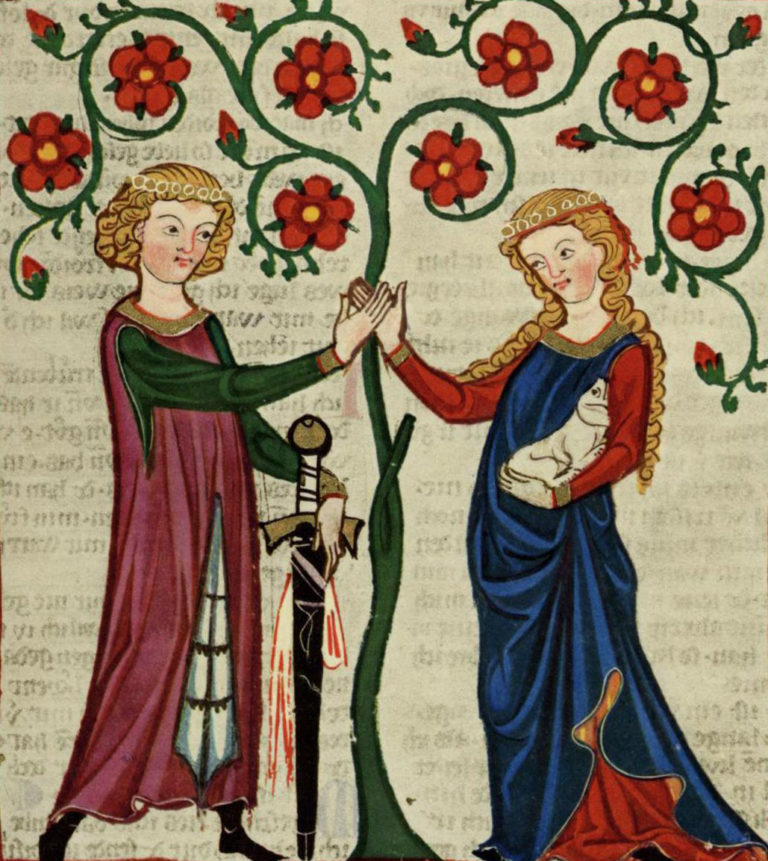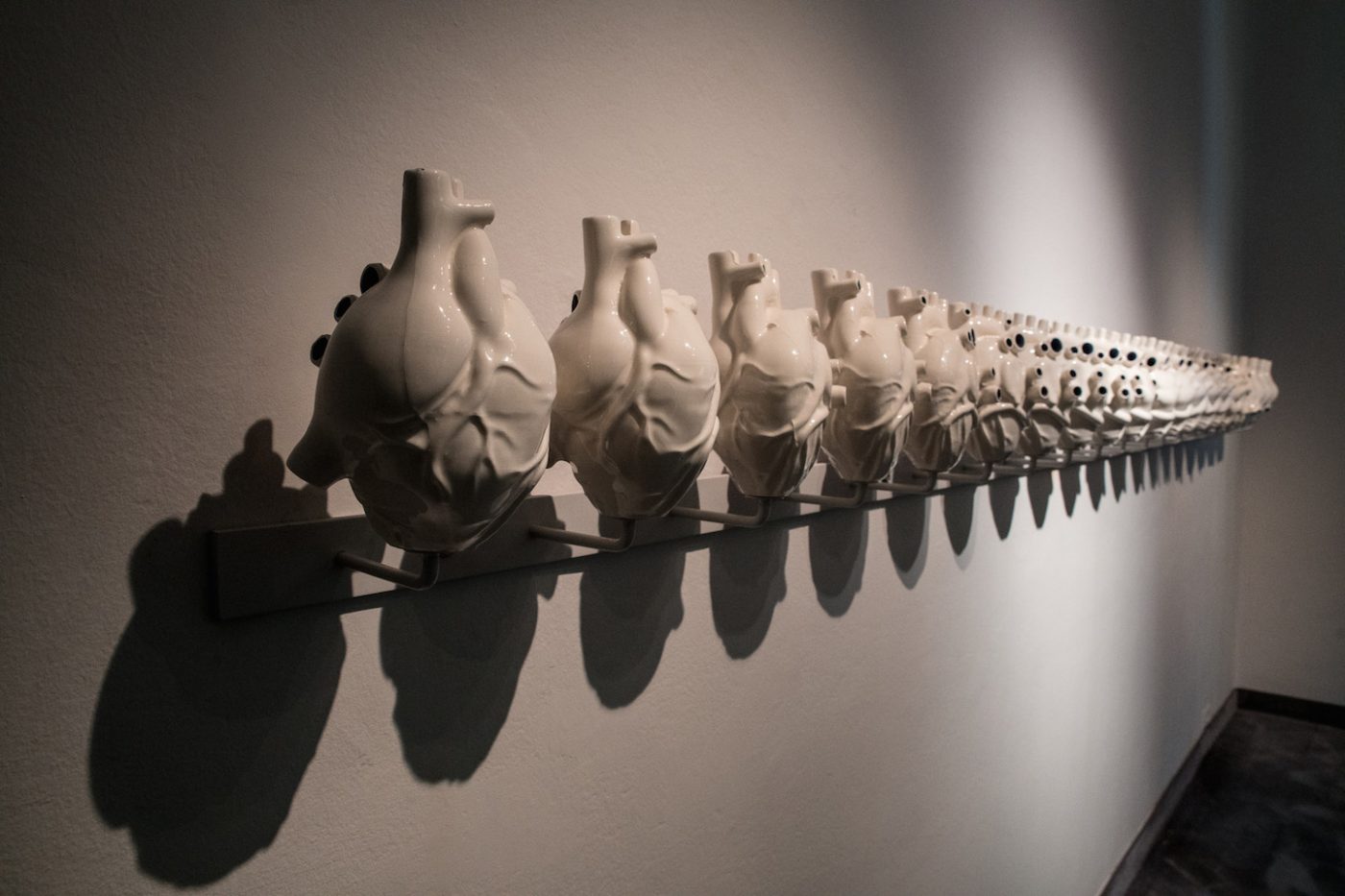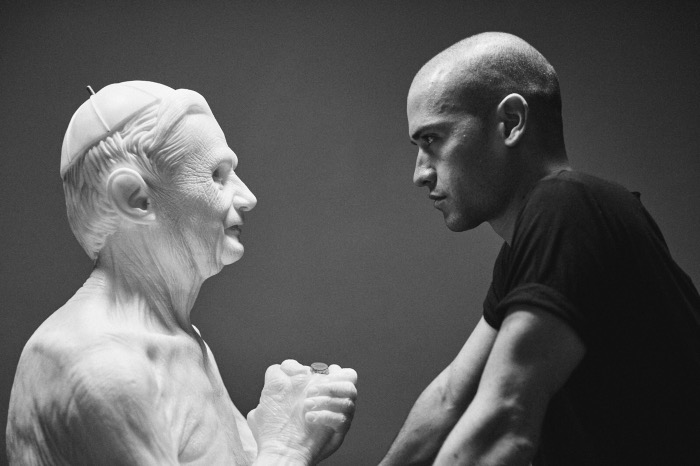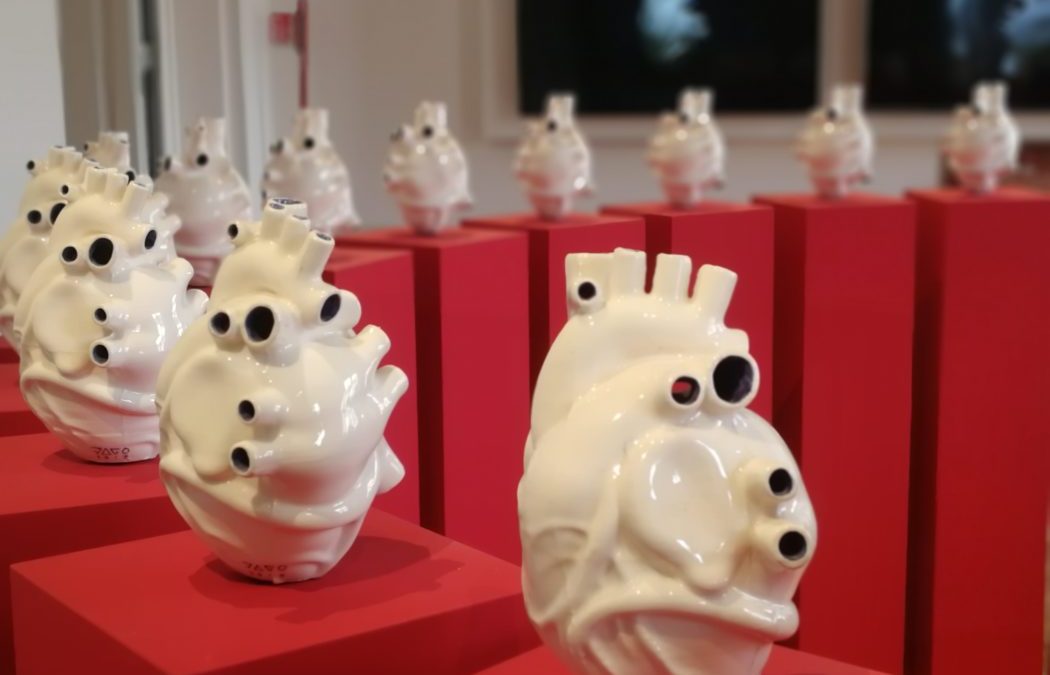30 ceramic hearts for just one heartbeat
A legend within legend: if Valentine’s Day is the patron saint of lovers, the heart is the guardian organ of all feelings.
For Valentine’s Day, stores are full of boxes, bijou, and chocolates, and everything takes the shape of a heart.
The design we learn from a very young age consists of two curved lines meeting at an acute angle, forming a perfectly symmetrical figure. But from an anatomical point of view, we know as we grow up that nothing about our bodies has perfect symmetry, let alone our hearts.
Conventionally it is represented through a stylized graphic that has become a symbol integrated into our society and with clear meaning. It encapsulates as well as the best epic poems have taught us, the ardor and passion of human nature manifested through our emotions.

Courtesy Accademia Fabio Scolari
The difficulty in depicting this vital organ is precisely that of being able to capture the pulsating and continuous movement, returning its changing form in a single image. However, in the 2017 work “Circulatory Apparatus” the artist Jacopo Cardillo, aka JAGO, managed to “make” a ceramic heart “beat.
The creation of the work took more than six months to complete as it involved several stages of processing, starting from the clay structure, through computer processing, and finally 3D animation.
The result is mind-blowing, thanks to the use of the 3D printer he managed to reconstruct the sequence of heartbeat movements and create a mold for each one, inside of which he then poured liquid ceramic and obtained a “different” heart at each instant of the pulse.

Apparato circolatorio, Jago, 2017 – Courtesy Mousse Magazine
Jago is a young Italian artist who loves to tell his story, is very active on social media, and often shares videos and photos of his work, even during the creative process itself. His sculpture, as well as we saw for “Apparato circolatorio” is based on traditional techniques, from clay as in this case to the marble of “Habemus Hominem” depicting the bust of Pope Benedict XVI that has become one of his best-known works, but he also exploits the heterogeneous world of technologies, always staying up-to-date on their potential use.
Comparing several of his works, we can see that the common thread that binds them is that of a representation as faithful to reality as possible, where every nerve and wrinkle of expression is carefully sculpted. The artist himself makes no secret of the fact that he has always been inspired by the works of Michelangelo, probably his only real teacher since he left the academy even before finishing it.

Habemus Hominem, Jago, Courtesy Arte in breve
In short, looking at Apparato circolatorio one could say then that there is not just one heart but one for every moment of our lives, and so are our feelings, which are changeable and capricious.
Perhaps on the occasion of February 14, it would therefore be interesting to ask ourselves: what shape is our heart in today?

